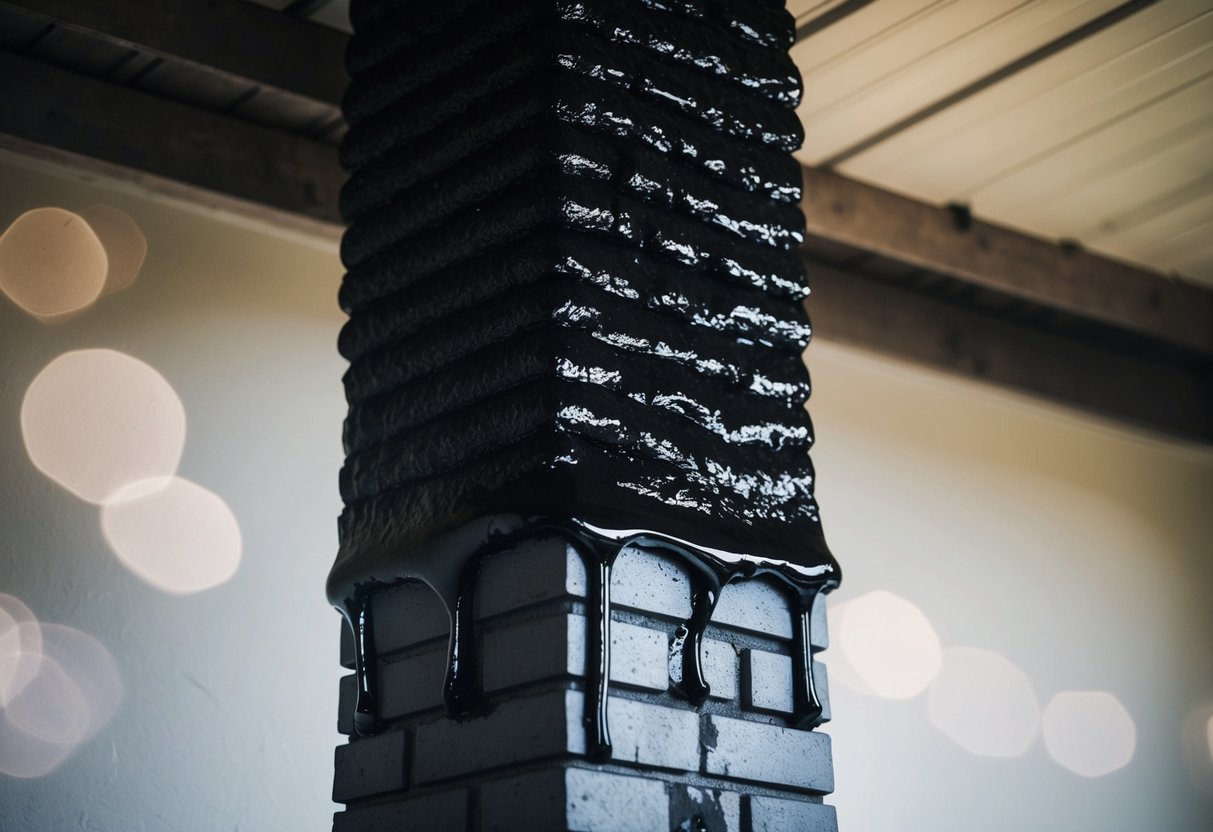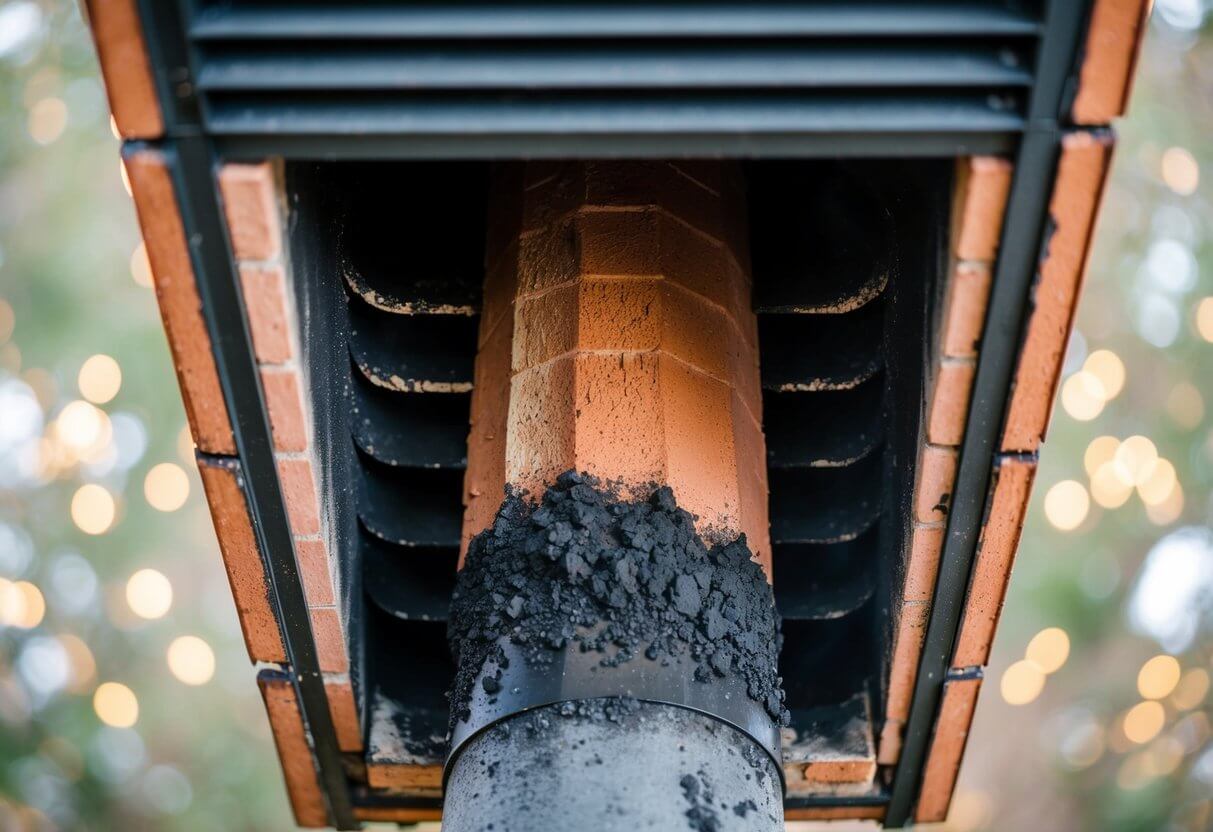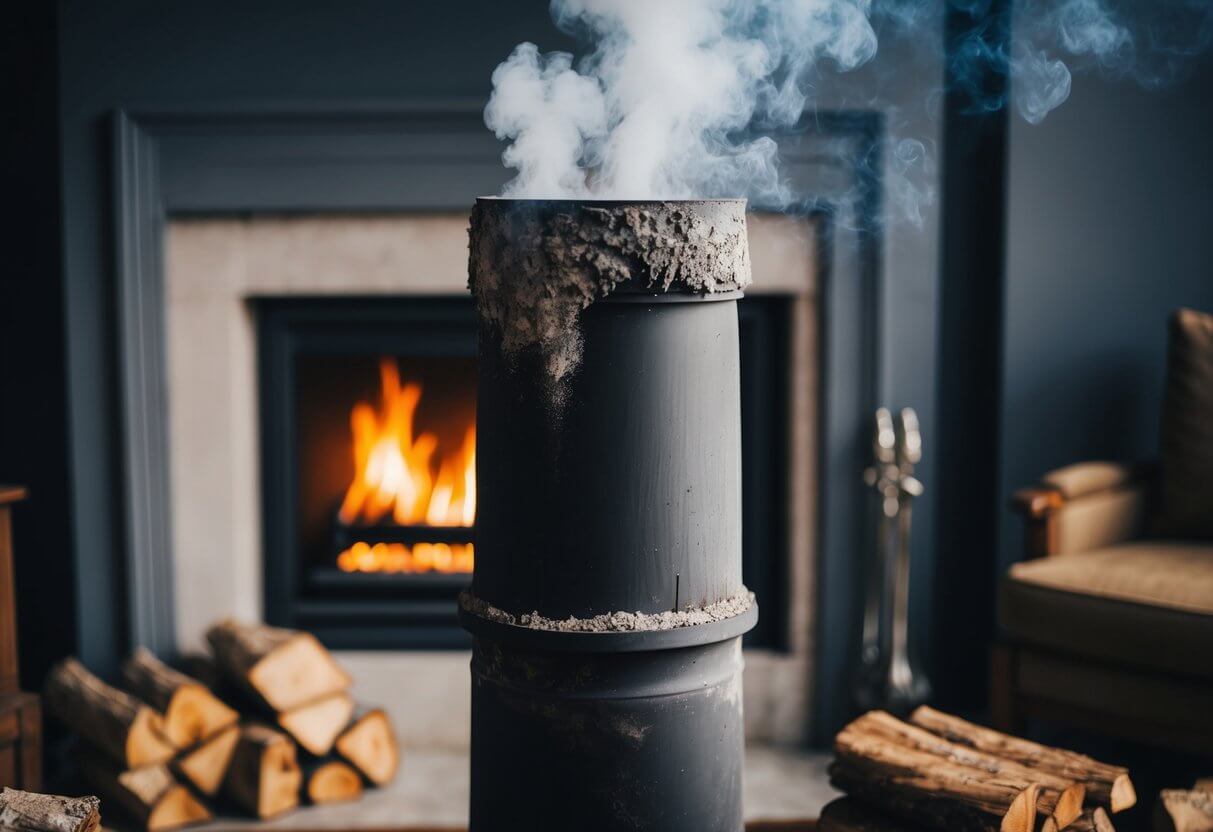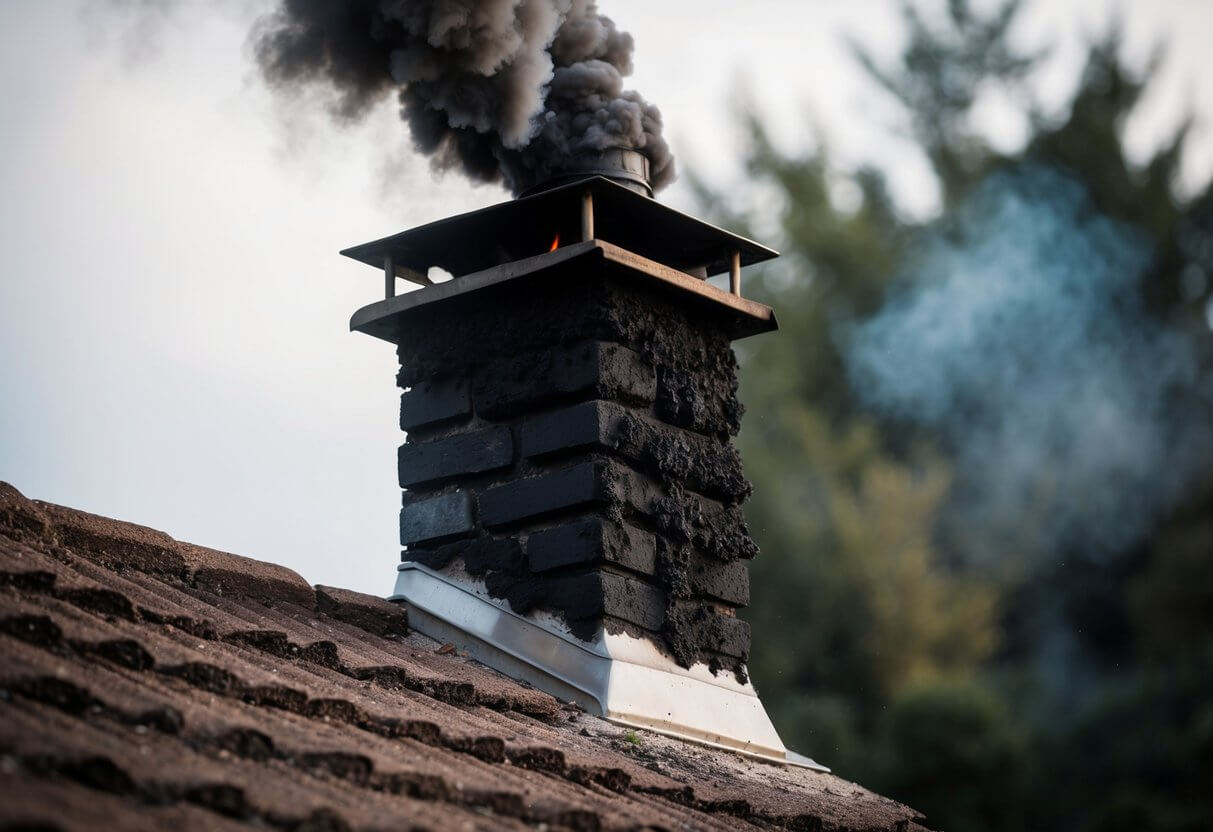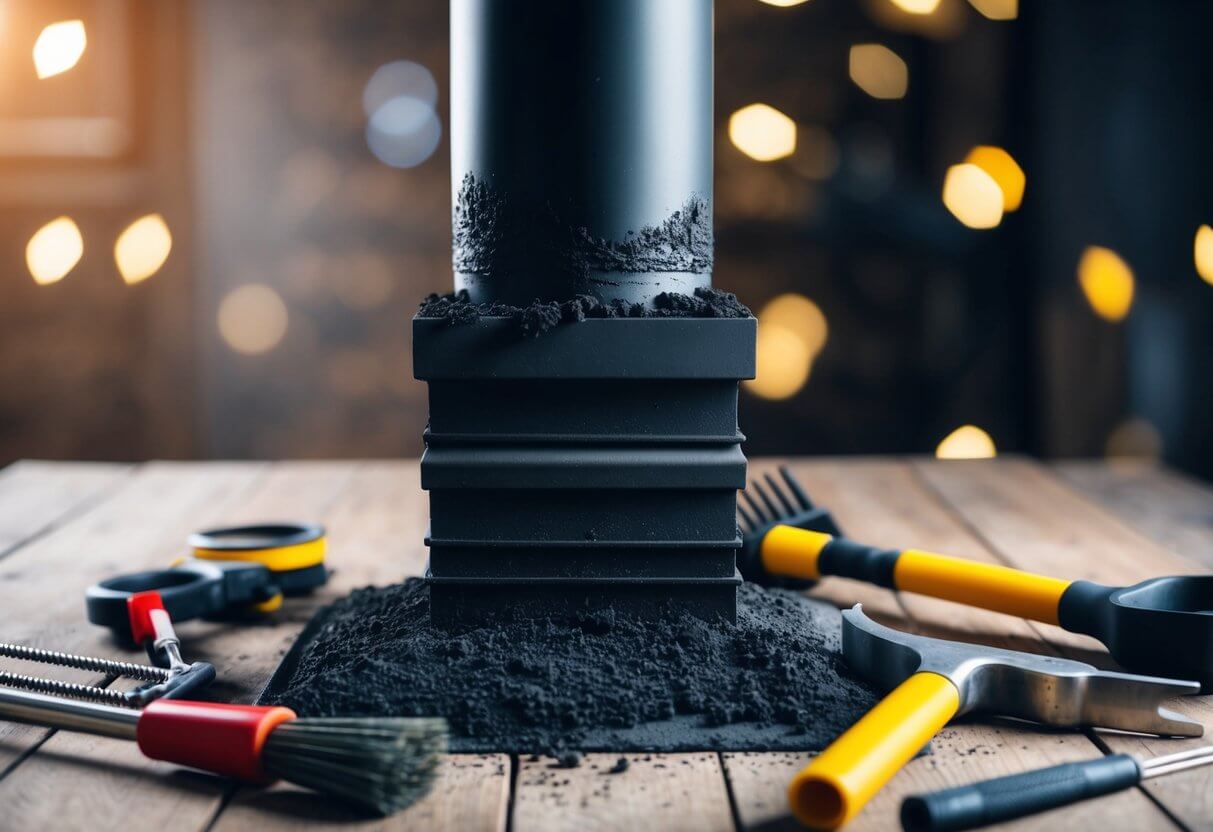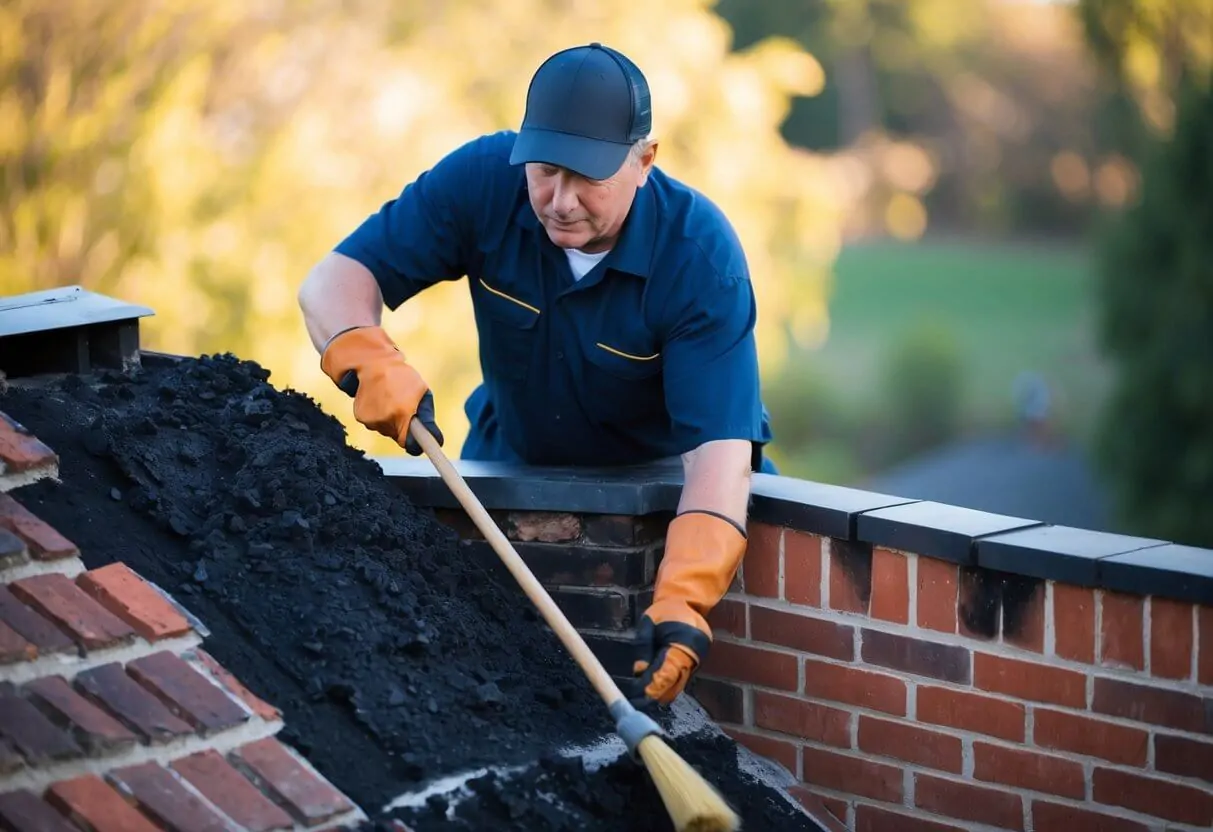Introduction
Chimney creosote is a byproduct of burning wood in fireplaces and stoves, and it can accumulate within the chimney over time. Creosote buildup poses serious risks, including chimney fires and health hazards from its toxic components. Understanding what chimney creosote is and how it accumulates is essential for any homeowner who uses a wood-burning system.
As wood burns, the smoke released contains various chemicals, which can condense and form a sticky, tar-like substance. Factors such as burning unseasoned wood, insufficient air supply, and cooler chimney temperatures contribute significantly to the production of creosote. Regular maintenance and inspections are vital for preventing hazardous buildups, ensuring safety and functionality.
The dangers of creosote extend beyond structural risks; it can also cause health issues for those exposed to its residue. By knowing more about chimney creosote and its implications, individuals can take proactive measures to protect their homes and families.
Key Takeaways
- Creosote forms as a result of incomplete combustion of wood.
- Accumulation is accelerated by factors like unseasoned wood and poor ventilation.
- Regular inspection and maintenance are crucial to prevent fire hazards and health risks.
Understanding Creosote
Creosote is a complex substance formed during the combustion of wood, and its buildup in chimneys poses significant risks. It is essential to comprehend its chemical makeup, the stages of its accumulation, and the types that can develop over time.
Chemical Composition and Formation
Creosote is primarily composed of tar, soot, and other organic compounds resulting from incomplete combustion of wood. When wood is burned, the high heat causes various components to vaporize, and as these vapors cool in the chimney, they condense and form creosote.
Incomplete combustion is a key factor contributing to the formation of creosote. When wood does not burn completely, oxygen levels drop, and smoke particles adhere to the walls of the chimney. This accumulation can be exacerbated by high moisture content in wood, leading to further condensation and buildup.
Stages of Creosote
Creosote builds up in three distinct stages, each characterized by its appearance and composition:
- Stage 1 Creosote: Often seen as a fine, flaky soot, this initial stage is relatively easy to clean. It consists mainly of small particles formed from smoke, making it less hazardous.
- Stage 2 Creosote: In this stage, creosote takes on a thick, crusty appearance. It can vary in color, often appearing dark brown or black, and has a tar-like texture. This form is more challenging to remove and poses greater risks.
- Stage 3 Creosote: This is the most dangerous type, often referred to as third degree creosote. It appears as a hard, dense layer in the chimney and is highly flammable. Proper removal is crucial to prevent chimney fires and ensure safety.
Types of Creosote
Creosote can be categorized into three types based on its stage and characteristics:
- First Degree Creosote: Light and flaky, this type is easily removed and typically does not pose a significant risk.
- Second Degree Creosote: More tar-like and difficult to clean, this type may cause blockages and requires professional intervention.
- Third Degree Creosote: Dense and hard, this type is a fire hazard. It is imperative that experienced professionals handle its removal to ensure chimney safety.
Understanding these aspects allows homeowners to take proactive measures in maintaining their chimneys and mitigating risks associated with creosote buildup.
Factors Contributing to Creosote Accumulation
Several elements influence the buildup of creosote in chimneys. Understanding these factors can help prevent problems and ensure safer operation of wood-burning appliances.
Burning Practices
The type of wood used and the method of burning have significant impacts on creosote formation. Unseasoned wood contains higher moisture levels, which leads to incomplete combustion. This results in a thick, sticky residue that clings to chimney walls.
In contrast, seasoned firewood—wood that has been dried for at least six months—burns more efficiently and produces less smoke. This enhances the overall combustion process and reduces creosote accumulation. Also, using slow-burning wood can cause smoke to linger longer in the flue, increasing residue buildup.
Moisture Content in Wood
Moisture content is another critical factor. Wood that is too wet hampers combustion efficiency and increases smoke production.
For optimal burning, wood should have a moisture content of less than 20%. Wet wood not only contributes to creosote formation but also creates safety hazards by emitting more smoke and reducing heat output. This inefficiency can lead to cooler flue temperatures and further creosote deposits. Regularly checking the moisture levels before use can help minimize these risks.
Chimney Temperature and Airflow
The temperature of the chimney and the airflow through the system play essential roles in preventing creosote accumulation. When the chimney is not heated sufficiently, it does not effectively draw smoke up and out of the flue.
Poor airflow, which can stem from blockages or a design flaw, reduces the chimney’s ability to vent smoke efficiently. The lower the temperature, the more likely it is for creosote to form and adhere to the chimney walls. Maintaining good air supply and ensuring proper ventilation can significantly mitigate the risk of buildup, promoting a safer environment for wood-burning activities.
Health and Safety Risks of Creosote
Creosote presents several health and safety risks due to its toxic properties and potential to ignite. Understanding these dangers is essential for anyone who uses wood-burning appliances or works with treated wood.
Toxicity and Carcinogenic Effects
Creosote is classified as a toxic substance that can pose serious health risks. Prolonged exposure to creosote can lead to various respiratory issues, including irritation of the throat and lungs. Symptoms might include chronic cough and shortness of breath.
Furthermore, creosote has been identified as a possible carcinogen. Long-term contact with creosote, such as through skin exposure, has been linked to certain types of cancer, particularly among workers in wood treatment facilities. Children are particularly vulnerable, as they may come into contact with contaminated soil or surfaces.
Being aware of these risks can help individuals take necessary precautions, such as using protective gear and ensuring proper ventilation when dealing with creosote-related tasks.
Chimney Fires and Other Dangers
Creosote buildup in chimneys significantly raises the risk of chimney fires, which can cause devastating damage to homes. As creosote accumulates, it solidifies into a tar-like substance that is highly combustible. A small spark can ignite this buildup, leading to a large and dangerous fire.
In addition to fire hazards, creosote can produce carbon monoxide, a colorless and odorless gas that poses serious health risks. Inadequate ventilation during burning can lead to CO buildup, resulting in symptoms like headaches, dizziness, and in severe cases, unconsciousness or death.
Routine chimney inspections and cleanings are crucial to minimize these dangers and ensure safe appliance operation. Regular maintenance can effectively reduce both fire risks and harmful exposure to toxic substances.
Preventive Measures and Maintenance
Maintaining a chimney is essential for ensuring safety and minimizing creosote buildup. Regular maintenance not only reduces fire hazards but also extends the life of the chimney system.
Regular Cleaning and Chimney Sweeping
Homeowners should schedule regular cleaning and chimney sweeping at least once a year, especially if they use their fireplaces frequently. A professional chimney sweep is skilled in removing creosote and other buildups effectively. They will inspect the chimney for potential blockages and structural issues that could compromise safety.
Signs that cleaning is needed:
- Black, oily spots inside the chimney
- Difficulties in starting or maintaining a fire
- Unusual odors emanating from the fireplace
Ignoring these signs may lead to hazardous situations, including chimney fires. Regular maintenance helps keep the chimney safe and functional.
Burning the Right Wood
The type of wood burned significantly affects creosote production. Hardwoods like oak, hickory, and maple produce less smoke compared to softwoods like pine and fir. Burning dry, seasoned firewood reduces moisture content, leading to cleaner burns. Wet or green wood contributes to higher creosote buildup.
Tips for proper wood burning:
- Use seasoned wood with a moisture content of less than 20%.
- Avoid burning trash or pressure-treated wood.
- Maintain good airflow by not overloading the fireplace.
These practices help minimize creosote accumulation and promote better chimney efficiency.
Chimney Liners and Maintenance Tips
Installing a chimney liner is crucial for safeguarding the structure and ensuring optimal operation. A liner protects brick and mortar from corrosive gases and byproducts of combustion. Various materials are available, including stainless steel and clay tiles, each with distinct benefits.
Maintenance tips for chimney liners:
- Inspect the liner regularly for cracks or deterioration.
- Use a chimney sweep to check for blockages caused by creosote or debris.
- Avoid using unlined chimneys, as they increase fire risks.
Proper maintenance of chimney liners enhances safety and minimizes the chances of creosote buildup while ensuring efficient venting of flue gases.
Professional Inspection and Cleaning
Regular professional chimney inspections are crucial for maintaining chimney safety. A trained chimney sweep conducts a thorough examination to identify any signs of creosote buildup, structural damage, or potential hazards.
The inspection process includes:
- Checking for black flakes and oily residues, indicating creosote accumulation.
- Assessing the chimney structure, including bricks and mortar for cracks.
- Evaluating the functionality of the flue and stovepipe.
Chimney cleaning is an essential service that removes existing creosote and reduces the risk of chimney fires. Accumulated creosote can easily ignite, leading to dangerous situations. A professional cleaner uses specialized tools to safely eliminate creosote buildup.
Homeowners should schedule inspections at least once a year. This frequency depends on factors such as:
- How often the fireplace is used.
- The type of wood burned.
- The ventilation quality of the chimney.
Proper chimney maintenance involves more than just cleaning. It includes monitoring for any changes in performance, observing odors, and ensuring there are no pest intrusions.
By prioritizing professional inspections and cleaning, homeowners can protect their property and ensure safe fireplace use. This proactive approach minimizes the risk of chimney fires and extends the lifespan of the chimney system.
Frequently Asked Questions
Chimney creosote raises many questions regarding its appearance, removal methods, signs of buildup, and differences from soot. Understanding these aspects can help homeowners maintain safe and efficient wood-burning appliances.
What does chimney creosote look like?
Chimney creosote can vary in appearance based on its stage of buildup. It may start as a flaky, black substance or develop into a glossy, tar-like deposit. The texture can range from a powdery residue to a thick, sticky coating.
How is chimney creosote removed from wood stoves?
To remove chimney creosote from wood stoves, a chimney brush is often the primary tool. It can effectively reach various surfaces to dislodge creosote. Additionally, a vacuum may be used to collect debris after brushing.
What are the signs of creosote buildup in chimneys?
Signs of creosote buildup include a strong, smoky smell, black soot in the fireplace, and visible dark residues on chimney walls. Homeowners may also notice slower burning and increased smoke during fires, indicating potential creosote accumulation.
How can one effectively remove glazed creosote from a chimney?
Dissolving glazed creosote may require a more intensive approach, as standard brushes might not suffice. A cleaning solution made from salt, dish soap, and ammonia can be effective. Professional services may be advisable for significant deposits.
What methods are available for preventing creosote buildup in chimneys?
To prevent creosote buildup, homeowners should use well-seasoned hardwoods, maintain proper airflow, and conduct regular chimney inspections. Frequent cleaning and avoiding burning damp wood can also help minimize the accumulation of creosote.
What distinguishes creosote from soot within a chimney?
Creosote and soot differ in composition and formation. Creosote results from the incomplete combustion of wood and is a flammable, tar-like deposit. Soot, on the other hand, is primarily carbon particles produced during burning, which may accumulate alongside creosote in a chimney.

